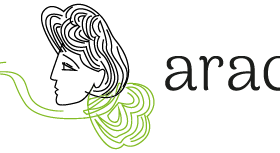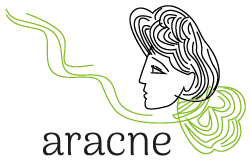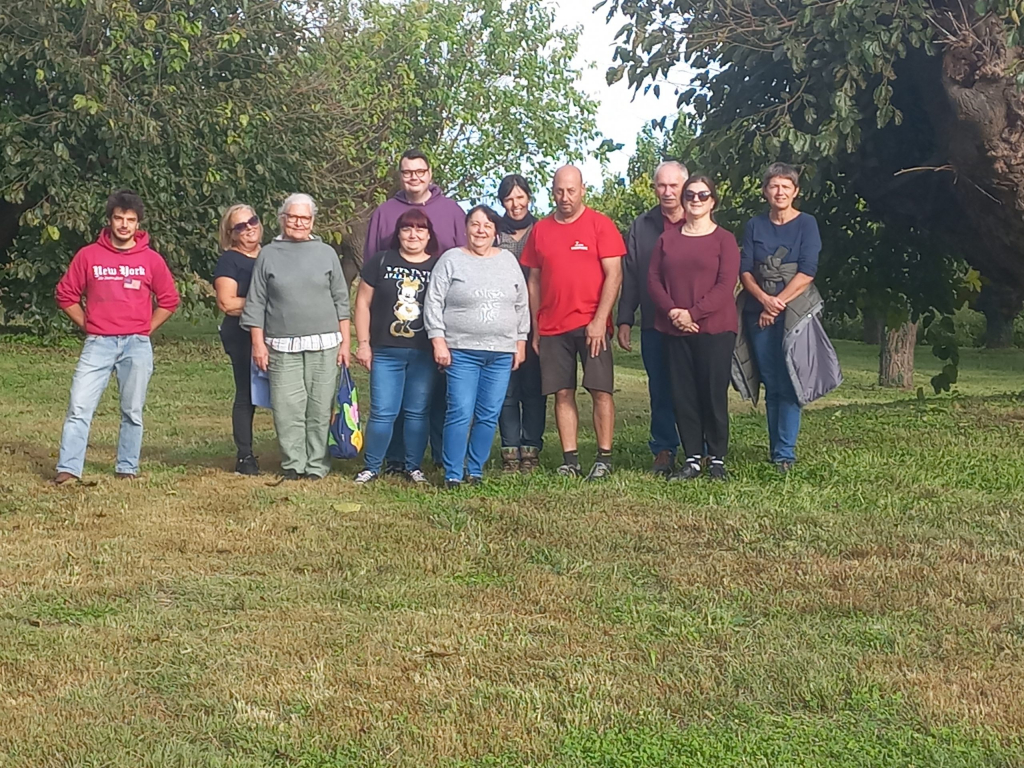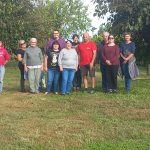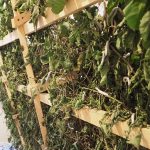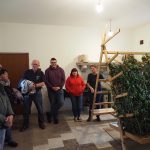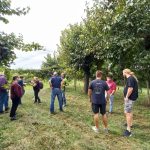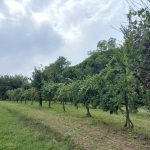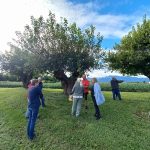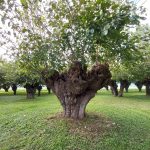The Department of Botany and Plant Physiology at the Faculty of Agriculture and Life Sciences, University of Maribor, recently organized a professional excursion to the Veneto and Friuli-Venezia Giulia regions as part of its training program on mulberry cultivation in sustainable agriculture, supported by the ARACNE (Advocating the Role of silk Art and Cultural heritage at National and European scale) project and the pilot project “Green Transition to Climate Innovative Agro-Food Systems” within the Recovery and Resilience Plan. This excursion was aimed at training participants, who had previously attended sericulture consultations, with best practices in mulberry cultivation and traditional silkworm rearing.
Our first stop was the Leghissa family farm in Prečnik, located in the Karst region, which primarily focuses on cheesemaking. In recent years, the son Vincent Leghissa, who graduated in food technology at the University of Ljubljana, has revived traditional Venetian silkworm rearing method first introduced by Pasqualis in the 19th century.
Maintaining cleanliness of the feeding beds is a crucial aspect of rearing. This is achieved by placing perforated paper with holes of varying sizes or plastic nets, according to the size of the larvae, on the beds. Leaves or light branches are then used as cover to let them pass through perforated paper or net, allowing rearers to easily transfer them to a clean, prepared feeding bed or box by lifting the sheet of paper.
However, cleaning with perforated paper or nets requires a lot of labour and manipulation, especially in the last instars. For this reason, sophisticated methods have gradually been developed to avoid bed cleaning by promoting the self-transfer of silkworm larvae from leaf waste to fresh leaves. One example is the method proposed by Pasqualis within the end of the 19th century that is used by Vincent Leghissa. It involves the use of opposing wooden frames with attached wire mesh or in the original system ropes on which branches are placed during the last two stages of the silkworms’ life cycle. Branches of trees and bushes from species available in nature are laid across the top of the frame, prompting the silkworms to automatically migrate to spin their cocoons.
The demostration workshop was also visited by Mr. Franc Fabec, head of the Slovenian Farmers’ Association in Italy. It gathers over 700 farms in the region, primarily focused on livestock farming, with some in the coastal areas also cultivating olives and vegetables. However, only the Leghissa family is involved in sericulture. Vincent became acquainted with silkworm farming at the BEM Agricultural School (Istituto Statale di Istruzione Superiore Brignoli – Einaudi – Marconi, Gradisca d’Isonzo) in the Gradisca region and successfully completed the course in sericulture at CREA Padua. Following the presentation of the University of Maribor’s projects, there was an engaging discussion about the potential of silkworm rearing for niche products and its market prospects. During the demonstration activity, we were accompanied by the RAI crew and journalist Marco Tavčar, who specialises in the history of sericulture. He introduced us to the recently published article about Dr Bolle and Luigi Chiozza’s library in Pozzuolo del Friuli, which is under the auspices of ERSA – Agenzia Regionale per lo sviluppo rurale and preserves Bolle’s legacy.The excursion continued to Godega di Sant’Urbano, where we observed the traditional polycultural method of growing vines alongside mulberry trees called La Piantata Veneta. This vineyard, which was planted in 1921 and later managed by the Fabris family, is registered as part of Italy’s agricultural cultural heritage. It features a diverse selection of white and red grape varieties, including Tokaj. In this system, mulberries serve as supports for the vines. This method offers multiple benefits, including protection against excessive sunlight and heat—challenges exacerbated by climate change—thus helping to prevent sunburn damages of grape berries. Other advantages of this polyculture include wind protection, improved soil structure, wood and fruit production, and enhanced tourism potential. These benefits are supported by specific agronomic practices such as avoiding the use of chemicals and ensuring the health of both the vines and mulberry trees.
The excursion concluded with a visit to the impressive collection of historic mulberry trees in Vivaro, managed by Mr. Mauro Rizzotti, who inherited a large farm specializing in pig farming and crop production. He recognized the natural and cultural value of ancient mulberries and began transplanting trees from northern Italian regions. His collection now includes more than 700 trees, ranging in age from 70 to 400 years. This requires specialized skills and significant efforts, both in terms of labor and financial investment. The largest tree in the collection, nicknamed “The Hand of God,” has a circumference of more than 800 cm. Many of these trees have historical stories behind them, including one under which Napoleon Bonaparte is said to have rested.
The excursion was supported by the silkworm germplasm material and the assistance of the experts of the CREA Sericulture Laboratory of Padova (Consiglio per la Ricerca in Agricoltura e l’Analisi dell’Economia Agraria) within the Aracne project. The event was organized for participants of the pilot project “Green Transition to Climate Innovative Agro-Food Systems” within the Recovery and Resilience Plan. Slovenian silkworm rearers from regions of Goričko, Prlekija, Maribor, Vipava Valley, and the coastal area participated in the excursion.
During the excursion, we were joined by the RAI television team, which documented the event and published a contribution in the program “Dnevnik Zamejskih Slovencev”, in the agricultural section, on RTV SLO1, on September 13, 2024. You can watch the contribution about our excursion at the link bellow :
